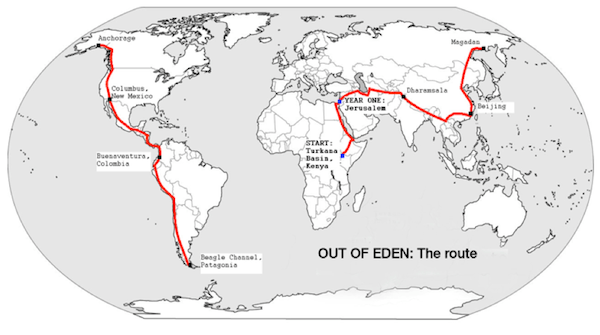An American reporter is planning to retrace the steps humans first took when spreading from Africa across the world. Paul Salopek’s journey, which begins in January, will see him walk around 22,000 miles over the course of seven years.
The journey will begin in East Africa and take him across Central Asia and China, then by sea from Siberia to Alaska, finishing with the full length of the Americas, winding up in the Patagonia region that makes up southern Argentina and Chile. It’s designed to map the expansion of the human population, albeit at a much faster pace.
Naturally he’ll have more advanced tech than early man: he told the Nieman Lab he’s planning on carrying a MacBook Air, a Sony combined video and stills camera, a smaller camera, a GPS device and an audio recorder.
As part of the project he plans to collect the same set of material every time he reaches a 100 mile point: sound and video recordings, a panorama shot, pictures of the earth and sky, and a one minute interview. These will be patched together into a multimedia archive he’s described as “a family portrait of humanity.”
Outside of the scheduled recordings. Salopek plans to report on stories he finds along the way as he encounters “scores if not hundreds of ethnic groups.”
Not only does Salopek face a logistical challenge in planning and arranging transport where necessary and to hire local guides, but he’ll also have to take care of border paperwork such as visas. He says Iran will likely be the biggest challenge but wants to avoid taking a huge detour to bypass it. At the moment he’s only made paperwork plans for the first couple of years, reasoning that there’s no way of knowing which governments or even borders will have changed by 2019.
There’ll also be mental challenges: Salopek explained that he expects to be hit by the unlikely twin pressures of solitude and intense media attention.

